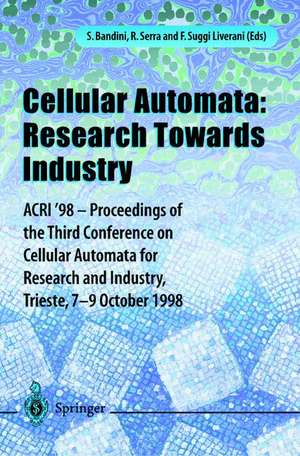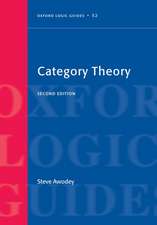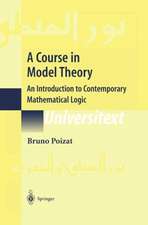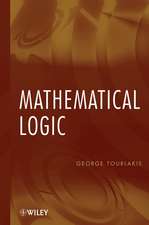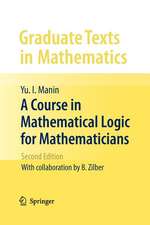Cellular Automata: Research Towards Industry: ACRI’98 — Proceedings of the Third Conference on Cellular Automata for Research and Industry, Trieste, 7–9 October 1998
Editat de Roberto Serra, Furio Suggi Liveranien Limba Engleză Paperback – 30 sep 1998
Preț: 645.47 lei
Preț vechi: 806.83 lei
-20% Nou
Puncte Express: 968
Preț estimativ în valută:
123.52€ • 128.18$ • 103.25£
123.52€ • 128.18$ • 103.25£
Carte tipărită la comandă
Livrare economică 15-29 martie
Preluare comenzi: 021 569.72.76
Specificații
ISBN-13: 9781852330484
ISBN-10: 1852330481
Pagini: 296
Ilustrații: X, 283 p. 57 illus.
Dimensiuni: 155 x 235 x 16 mm
Greutate: 0.42 kg
Ediția:1st Edition.
Editura: SPRINGER LONDON
Colecția Springer
Locul publicării:London, United Kingdom
ISBN-10: 1852330481
Pagini: 296
Ilustrații: X, 283 p. 57 illus.
Dimensiuni: 155 x 235 x 16 mm
Greutate: 0.42 kg
Ediția:1st Edition.
Editura: SPRINGER LONDON
Colecția Springer
Locul publicării:London, United Kingdom
Public țintă
ResearchCuprins
Models and Theory.- Evolving Two-Dimensional Cellular Automata to Perform Density Classification: A Report on Work in Progress.- A Perimeter-time CA for the Queen Bee Problem.- Role of Irreducible Processes in Complex Dynamics.- Coupling Microscopic and Macroscopic Cellular Automata.- Synchronous and Asynchronous Updating in Cellular Automata.- Applications.- Where do Industrial Districts Come From? A Cellular Automata Model of Competition, Cooperation and the Dynamics of Industrial Clusters (invited lecture).- 2D and 3D Lattice Gas Techniques for Fluid-Dynamics Simulations.- A Cellular Automata Based Computational Model for the Simulation of Dynamic Properties of Filled Rubber Compounds.- Recent Advances in Dynamical Models of Biodegradation.- Cellular Automata Approaches for Simulating Rheology of Complex Geological Phenomena.- Evolutionary Cellular Automata for Image Compression.- Uniform and Non-Uniform Cellular Automata: Some Issues and Case Studies in Computer Vision.- Linear-Time Recognition of Connectivity of Binary Images on 1-bit Inter-Cell Communication Cellular Automata and Their Related Algorithms.- Border Detection in Digital Images With a Simple Cellular Automata Rule.- A Computational Model Based on the Reaction-Diffusion Machine to Simulate Transportation Phenomena: The Case of Coffee Percolation.- Learning Urban Cellular Automata in a Real World: the Case-Study of Rome Metropolitan Area.- A Cellular Automaton Traffic Flow Model for Online-Simulation of Urban Traffic.- A Cellular Automata Model of the Expansion of the Assyrian Empire.- Artificial Intelligence, Artificial Life and Biology.- Genetic Network Models of Biodegradation.- Modeling Production with Artificial Societies: the Emergence of Social Structure.- A Cellular Neural Network Implementing an Associative Memory for 2-Dimensional Spatial Patterns.- Cellular Automata in an Artificial Life Perspective.- CA Environments.- Backward Facing Step Validation of the FHP-III Lattice-Gas Model.- A Problem-Solving Environment Based on Cellular Automata.- The Cells Start Walking: Moving Objects in CDL++.- Author Index.
